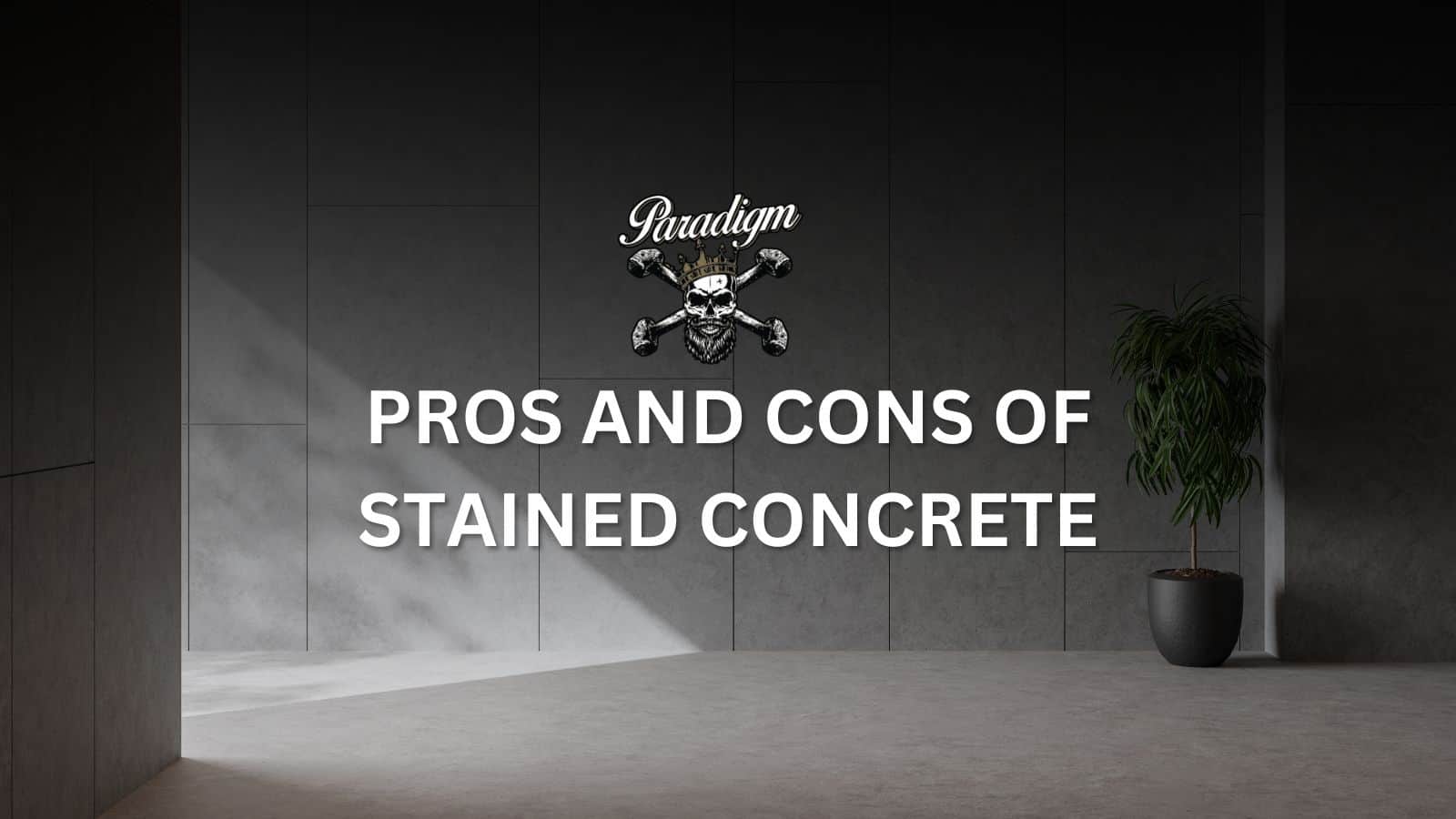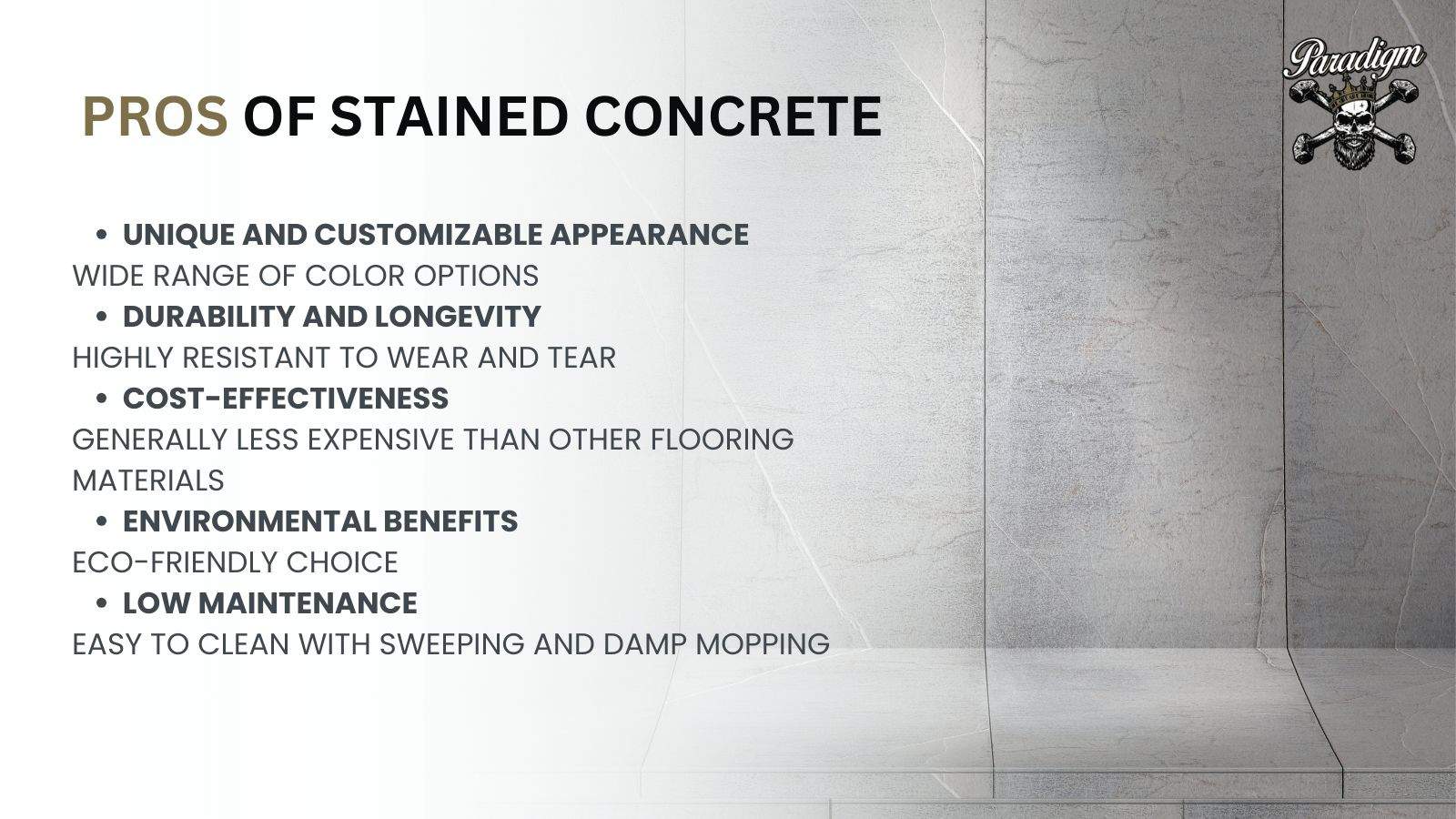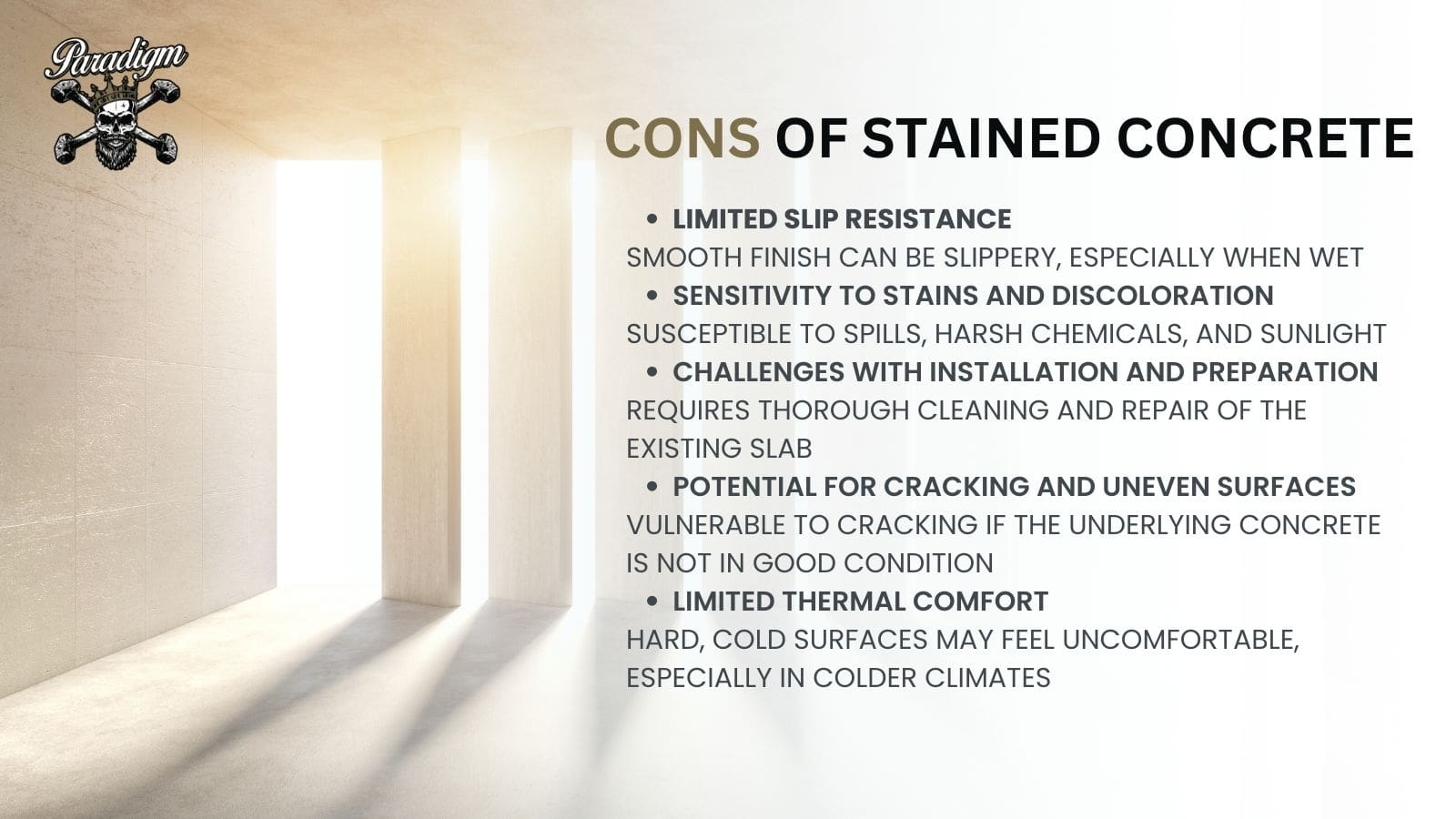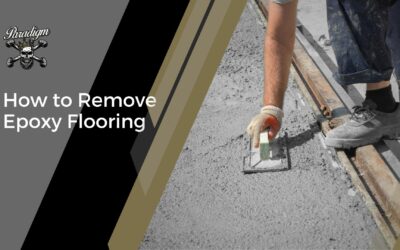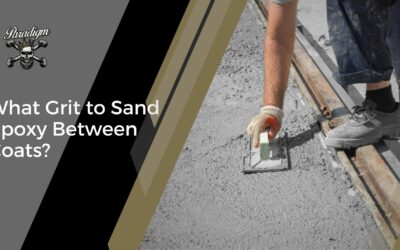Stained concrete is an increasingly popular option that offers a unique and visually appealing solution. With its ability to be customized in a wide range of colors and patterns, stained concrete provides a stunning and durable finish that can enhance the overall aesthetic of any room or space.
However, as with any flooring choice, there are both pros and cons to consider when it comes to stained concrete. On the one hand, the durability and cost-effectiveness of stained concrete make it a tempting option, while the environmental benefits and customizable appearance can also be quite appealing.
On the other hand, the potential for slip resistance issues, sensitivity to stains and discoloration, and challenges with installation and preparation are all factors that you’ll need to weigh carefully. Also, the risk of cracking and uneven surfaces is something that must be taken into account when evaluating stained concrete as a flooring choice.
Table of Contents
What are the Pros of Stained Concrete?
Stained concrete offers a customizable, durable, cost-effective, eco-friendly, and low-maintenance flooring solution.
1. Unique and Customizable Appearance
One of the primary benefits of stained concrete is its ability to provide a truly unique and customizable look for your space. With a wide range of color options and the ability to create various patterns and designs, you can achieve a one-of-a-kind aesthetic that perfectly complements your desired style and décor.
2. Durability and Longevity
Stained concrete is renowned for its durability and long-lasting performance. The stained finish is highly resistant to wear and tear, making it a suitable choice for high-traffic areas. With proper care and maintenance, a stained concrete floor can retain its appearance and functionality for many years.
3. Cost-Effectiveness
Compared to many other flooring materials, stained concrete is generally a more cost-effective solution. The process of staining an existing concrete slab is typically less expensive than installing a completely new flooring system, making it a budget-friendly option for both residential and commercial applications.
4. Environmental Benefits
Stained concrete is considered an eco-friendly flooring choice, as it reduces the need for additional materials and resources. By utilizing the existing concrete slab, stained concrete minimizes waste and promotes sustainable practices, making it a more environmentally conscious option.
5. Low Maintenance
Stained concrete floors are relatively easy to maintain, requiring simple cleaning methods such as sweeping and damp mopping. This helps to reduce the ongoing time and effort required to keep your floors looking their best.
What are the Cons of Stained Concrete?
While stained concrete offers several attractive benefits, there are also some potential drawbacks to consider such as:
1. Limited Slip Resistance
One of the main cons of stained concrete is its potential for reduced slip resistance, especially in wet or high-traffic areas. The smooth, polished finish can create safety concerns, as it may become slippery when exposed to moisture or spills. Additional treatments or coatings may be necessary to improve traction and mitigate this issue.
2. Sensitivity to Stains and Discoloration
Stained concrete can be susceptible to staining and discoloration over time. Spills, harsh chemicals, and prolonged exposure to sunlight can cause the stained finish to become uneven or discolored, which can detract from the overall appearance.
3. Challenges with Installation and Preparation
Proper surface preparation is crucial for achieving a successful stained concrete finish. The existing concrete slab must be thoroughly cleaned, repaired, and prepared before the staining process can begin. This can be a labor-intensive and time-consuming task, and it often requires the expertise of experienced contractors to ensure optimal results.
4. Potential for Cracking and Uneven Surfaces
Stained concrete can be vulnerable to cracking and unevenness, particularly if the underlying concrete slab is not in perfect condition. Existing cracks, unevenness, or structural issues in the concrete can transfer to the stained surface, creating an undesirable appearance and potentially compromising the integrity of the flooring.
5. Limited Thermal Comfort
Compared to some other flooring options, stained concrete may not provide the same level of thermal comfort underfoot. The hard, solid surface can feel cold and uninviting, especially in colder climates, which may be a consideration for certain residential or commercial applications.
What are the Ideal Applications for Stained Concrete?
The ideal applications for stained concrete are in spaces where the unique, customizable appearance, durability, and cost-effectiveness of this flooring solution can be best leveraged. Some of the most suitable applications include:
1. Residential Spaces
Stained concrete is an excellent choice for flooring in homes, particularly in high-traffic areas like living rooms, kitchens, and entryways. The ability to create personalized designs and patterns allows homeowners to seamlessly integrate the flooring with their desired interior design.
2. Commercial Environments
Stained concrete is widely used in commercial settings, such as retail stores, restaurants, offices, and lobbies. The durable nature and easy maintenance of stained concrete make it well-suited for these high-traffic commercial applications.
3. Outdoor Areas
Stained concrete can be an ideal choice for exterior applications, like patios, walkways, and pool decks. The weather-resistant properties of stained concrete allow it to withstand the elements while providing an attractive, slip-resistant surface.
4. Industrial and Warehouse Spaces
In industrial and warehouse settings, the robust and long-lasting characteristics of stained concrete make it a practical flooring option that can handle heavy foot traffic, equipment, and potential spills or chemical exposure.
5. Basements
The moisture-resistant properties of stained concrete make it well-suited for areas prone to dampness or potential water intrusion, as it is less susceptible to issues like warping, cracking, or mold growth compared to many other flooring materials.
Additionally, the low-maintenance nature of stained concrete is beneficial in basement environments, as it requires simple sweeping and damp mopping to keep it looking clean and well-maintained.
If you’re getting started with your stained concrete project and would love to work with the best contractors, then you should consult Paradigm Concrete Finishes. Contact our team today to discuss how stained concrete could be the perfect flooring solution for your home or business.
How long does stained concrete last?
With the right care, stained concrete can last an impressive 20 to 30 years or more. This long lifespan is attributed to the durable nature of the concrete itself, as well as the protective sealants and finishes applied during the staining process. Factors like the quality of the concrete mixture, the skill of the installation, and the frequency and methods of maintenance all help in maximizing the lifespan of stained concrete floors.
Can stained concrete develop cracks or damage over time?
Yes, stained concrete floors can develop cracks or other types of damage over time, despite their generally durable nature. Concrete is prone to expanding and contracting in response to changes in temperature and humidity, which can cause stress fractures and cracks to develop in the surface over an extended period.
In what types of spaces are stained concrete floors best suited?
Concrete floors are best suited for a wide variety of spaces, both indoor and outdoor, due to their exceptional durability, design flexibility, and low maintenance requirements.
Stained concrete is an excellent choice for high-traffic areas such as entryways, living rooms, kitchens, and commercial settings like retail stores, restaurants, and office buildings, where its resistance to wear and tear and easy cleanability make it a practical and long-lasting flooring option.
Outdoors, and stained concrete can be utilized for patios, pool decks, driveways, and walkways, as it is highly resistant to weathering, fading, and the elements, providing a visually appealing and functional surface that can withstand heavy use.
Can stained concrete be slippery especially when wet?
Yes, stained concrete floors can potentially become slippery, especially when wet. This is a characteristic that is important to be aware of when considering stained concrete as a flooring option.
The smoothness of the stained concrete surface, combined with the fact that it can become quite slick when wet, means that extra precautions may be necessary to ensure safety, particularly in high-traffic areas or spaces where water exposure is likely, such as entryways, bathrooms, or pool decks.
Are there any limitations to the design possibilities with stained concrete?
Yes. One key limitation is the inherent texture and appearance of the concrete substrate. Stained concrete relies on the natural variations and imperfections in the concrete surface to create unique patterns and visual effects.
This means that achieving perfectly smooth, uniform, or intricate designs can be more challenging compared to materials like tile or luxury vinyl that allow for greater control over the surface finish.
Patterns and designs with very fine details or sharp edges can also be problematic for stained concrete. This is because the porous nature of the material and the inherent variations in the concrete surface make it challenging to achieve crisp, precise lines and shapes.

